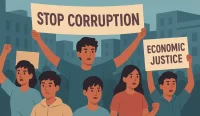The Federal Reserve recently made a significant move by cutting its benchmark interest rate by 0.50%, marking the first reduction in four years. This decision comes as the central bank aims to support the economy while balancing inflation concerns and a cooling labor market. Let’s break down what this change means for consumers, businesses, and the broader economy.
Why Did the Fed Cut Interest Rates?
The primary driver behind the rate cut is inflation. Over the past few years, inflation surged to its highest levels in decades, peaking at 7%. However, recent data shows that inflation has eased, now resting at approximately 2.2%. The Federal Reserve believes this progress toward its 2% target allows for a recalibration of monetary policy.
Key factors influencing the decision include:
- Inflation control: Inflation has significantly reduced from its highs, giving the Fed confidence to ease rates.
- Labor market: Job growth has slowed, and unemployment has risen slightly. However, the labor market remains relatively strong, with low overall unemployment.
- Economic activity: While the economy continues to expand, recent indicators show a moderate growth pace, supporting the Fed’s decision to lower borrowing costs.
Impact on Consumers and Businesses
The rate cut is likely to have several direct effects on both consumers and businesses. Here’s what to expect:
- Lower borrowing costs: Mortgages, auto loans, and credit card rates may decrease as a result of the Fed’s decision. This could encourage consumer spending and investment, fueling economic growth.
- Business investments: With lower interest rates, companies may find it easier to finance new projects, expand operations, and hire more workers, though the pace of hiring has already slowed.
- Savings rates: While borrowing costs drop, savers may see reduced returns on savings accounts and certificates of deposit (CDs).
These changes reflect the Fed’s dual mandate of maximizing employment while ensuring stable inflation.
What Comes Next?
The Fed has indicated that this may not be the last rate cut of 2024. Officials expect to lower the benchmark rate by another 0.50% before the year ends. They also project continued cuts through 2025 and 2026, as the central bank focuses on stabilizing the economy amid global uncertainties.
For those monitoring the markets or looking to borrow, it’s important to stay informed. Rate cuts generally signal cheaper borrowing costs, but they also reflect broader economic trends that can impact personal finances and business decisions.
Need Career Advice? Get employment skills advice at all levels of your career
Adapting to a Changing Economic Landscape
As the Fed moves forward with its policy shift, consumers and businesses should stay flexible and watch for signs of economic change. Lower rates can offer opportunities for refinancing or investing, but it’s essential to keep an eye on inflation trends and employment data as they develop. The road ahead could bring further adjustments, with the central bank continuing to balance growth with economic stability.




